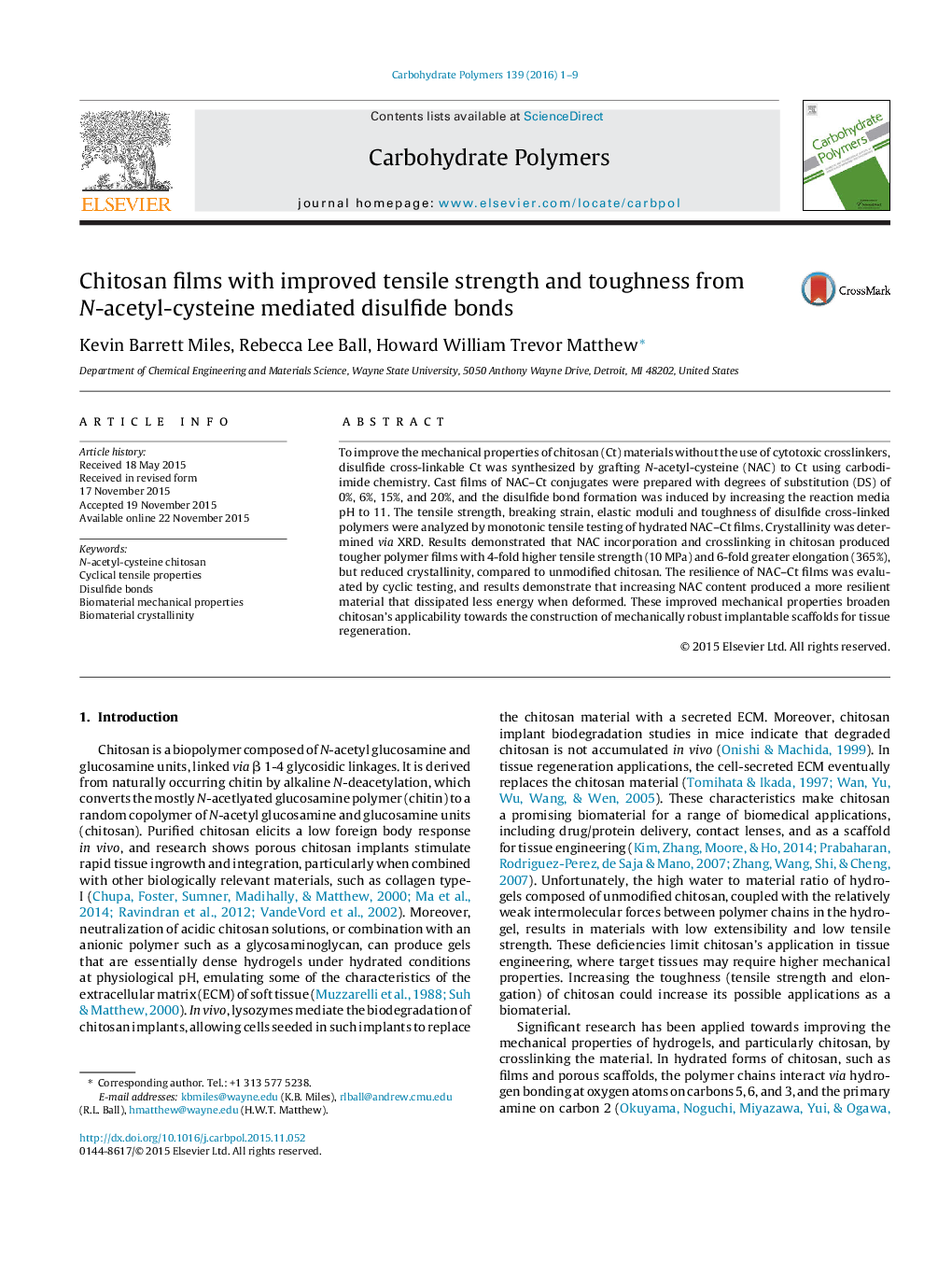| Article ID | Journal | Published Year | Pages | File Type |
|---|---|---|---|---|
| 1374816 | Carbohydrate Polymers | 2016 | 9 Pages |
•Hydrated films were prepared from N-acetyl cysteine (NAC) grafted to chitosan.•Cross-linked NAC on chitosan reduced crystallinity of chitosan films.•Covalent grafting of NAC to chitosan improves tensile properties of polymer films.•Crosslinking of NAC in chitosan improves mechanical resilience of polymer films.•Synthesis pH of 11 cross-linked all detectable NAC groups on chitosan.
To improve the mechanical properties of chitosan (Ct) materials without the use of cytotoxic crosslinkers, disulfide cross-linkable Ct was synthesized by grafting N-acetyl-cysteine (NAC) to Ct using carbodiimide chemistry. Cast films of NAC–Ct conjugates were prepared with degrees of substitution (DS) of 0%, 6%, 15%, and 20%, and the disulfide bond formation was induced by increasing the reaction media pH to 11. The tensile strength, breaking strain, elastic moduli and toughness of disulfide cross-linked polymers were analyzed by monotonic tensile testing of hydrated NAC–Ct films. Crystallinity was determined via XRD. Results demonstrated that NAC incorporation and crosslinking in chitosan produced tougher polymer films with 4-fold higher tensile strength (10 MPa) and 6-fold greater elongation (365%), but reduced crystallinity, compared to unmodified chitosan. The resilience of NAC–Ct films was evaluated by cyclic testing, and results demonstrate that increasing NAC content produced a more resilient material that dissipated less energy when deformed. These improved mechanical properties broaden chitosan's applicability towards the construction of mechanically robust implantable scaffolds for tissue regeneration.
